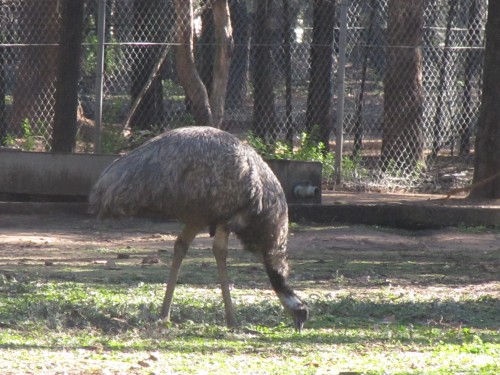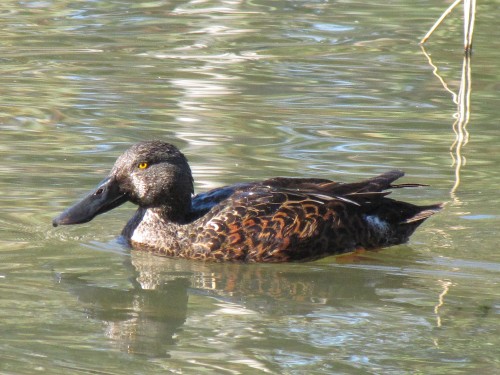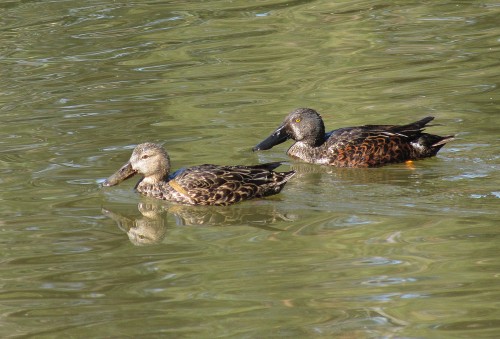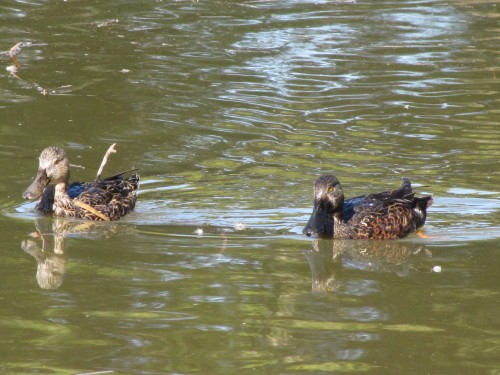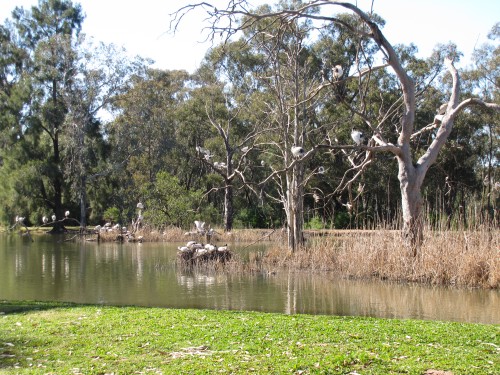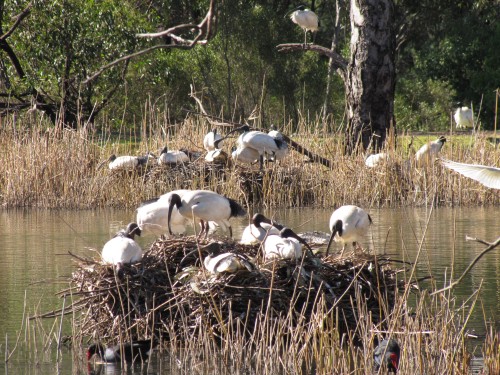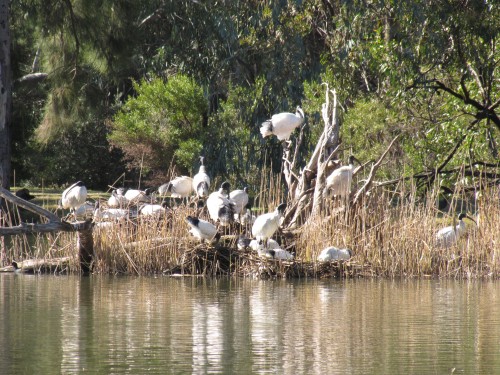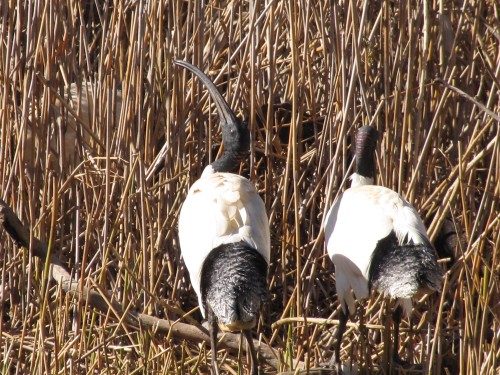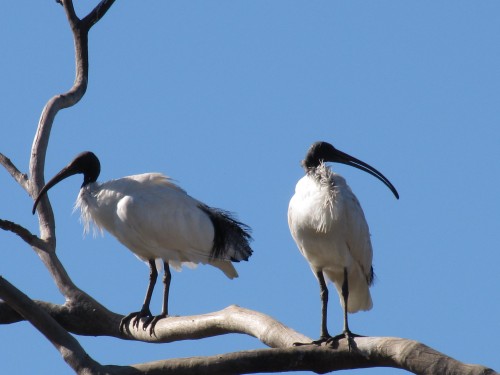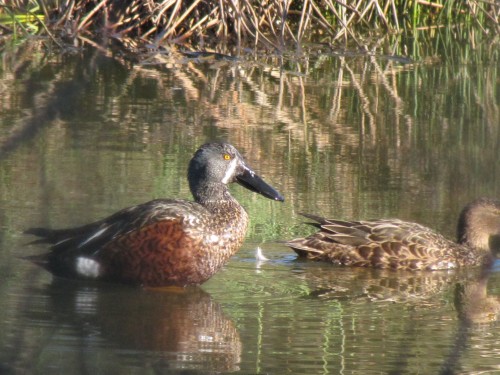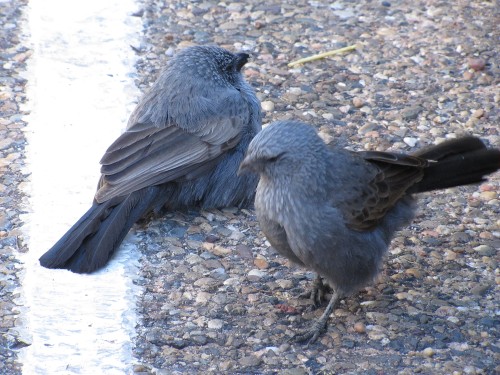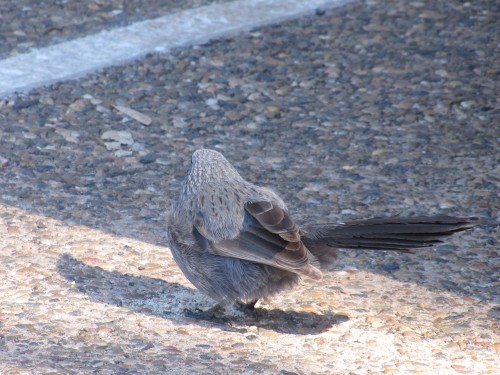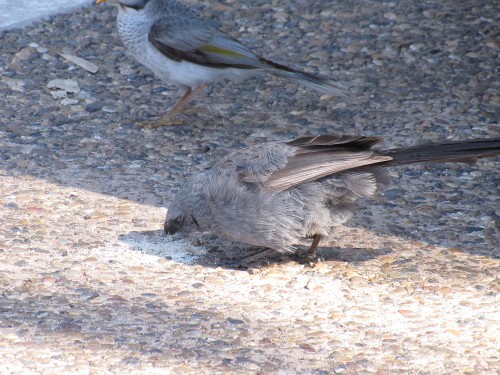Emu at Dubbo Zoo
It is always good to see an Emu, one of Australia’s iconic birds while travelling around this wonderful country of ours. There have been many times when we have seen literally hundreds of these large birds in the one place. At other times we only see them singly, or in small loose flocks up to a dozen or so.
When travelling from home in Murray Bridge, South Australia to visit family in Sydney we are always on the lookout as we travel across the Hay Plains. Sometimes we see none at all; on other occasions we have seen hundreds, including many young birds following their father. (The male hatches the eggs and cares for the young for about their first 18 months of life.)
The bird in the photo above was a single individual on the side of the road we travelled through the open range zoo, the Western Plains Zoo at Dubbo in central New South Wales. I don’t know if this bird is a captive bird making up a part of the display of animals in the zoo, or if it is a wild bird that has adapted to the easy life inside the zoo perimeter. Whatever the situation, it was quite at ease in its environment and not at all concerned about our car driving along just a few metres away.
Australasian Shoveler at Dubbo Zoo
On our visit last year to Dubbo Zoo in western New South Wales (Western Plains Zoo) we stopped to have lunch by a wetland next to the road which takes one through the zoo. On this swamp there were a few ducks, other waterbirds and many White Ibis, some nesting.
Two of the ducks in particular took my attention – a male and female Australasian Shoveler (also called Southern Shoveler). This is a species I have not seen very often and I only have a handful of photos worth showing here.
The Australasian Shoveler is found throughout the eastern parts of Australia, and is also present in south west Western Australia and in Tasmania. They are nomadic according to seasonal conditions and the presence of water. Their preferred habitats include lakes and other large bodies of water, either fresh or saline, swamps, wetlands, sewage ponds and flood waters.
While I concede that I haven’t observed this species on many occasions, in my experience they tend to be found singly, in pairs or small flocks, but never in great numbers. I stand to be corrected on this if I am wrong. This is also a rather timid species and is not easy to approach for photography. With the large number of daily visitors to the Dubbo Zoo is guess these birds have become used to people with cameras. I was able to get to within about 20 metres for these photos.
Further reading:
White Ibis at Dubbo Zoo
Some time ago I wrote a few posts here on our visit last year to the Western Plains Zoo in Dubbo. This zoo is an open range zoo which complements the Taronga Park Zoo in Sydney. As we had never been to this zoo before we were looking forward to our visit over two days – tickets are valid for two days which I think is a great idea. One needs two days to see everything but we only had an afternoon and a part day due to a funeral of a family member. Our planned visit to this area fortuitously coincided with the family getting together.
For my readers who may not know much about this zoo, it was established many years ago by Taronga Zoo. It is situated a few kilometres south of the rural city of Dubbo which is on the western plains of New South Wales about a five hour drive from Sydney. The animal enclosures are quite large and visitors are able to drive their cars from one enclosure to the next. Going via bicycle is another popular method and these can be hired for the day, or you can bring your own. Some energetic people even walk from one enclosure to the next.
On our visit we stopped to have lunch by one of the lakes which have been built in the zoo property. This lake has become a well occupied wetlands area. My interest was mainly in the birds present, but I am sure that many other creatures inhabit this wetland. The most prominent bird present was the White Ibis. In today’s photos I have shown some of them on nests in the reeds as well as general shots of the colony.
Further reading: all are links to more articles and photos taken at the Western Plains Zoo
Apostlebirds by the dozen
Apostlebirds are not all that common in South Australia. In fact, they are confined to a few locations in the mid-north of the state plus one site I know of near the eastern border south of Renmark. In parts of New South Wales, however, they are widespread and common in many places. They are also very confiding birds and will happily share their little patch of bushland – if you share some of your morning or afternoon tea.
On our recent visit to the Western Plains Zoo at Dubbo I was surprised at just how common they actually are, but then there is plenty of food for the taking, both in the animal enclosures and in the picnic areas where human food scraps are in abundance. It is not surprising then that I was able to get at least several good photos during our visit.
Apostlebirds are not the most photogenic birds found in Australia, being only dull grey with some black patches. What they lack in colour they certainly make up for with their gregarious nature. Because of this nature they certainly are one of my favourites and I always look out for them wherever we travel.
